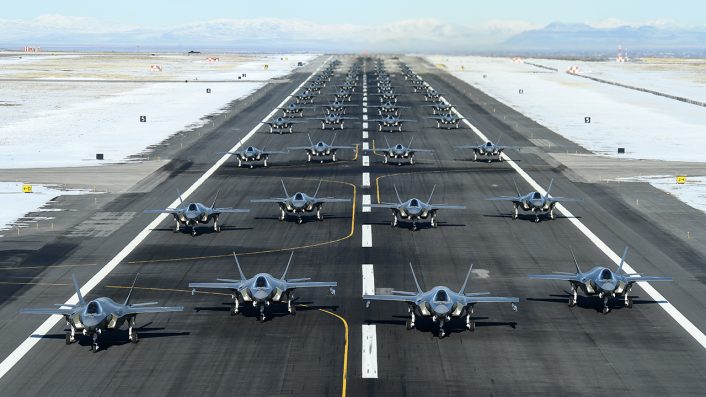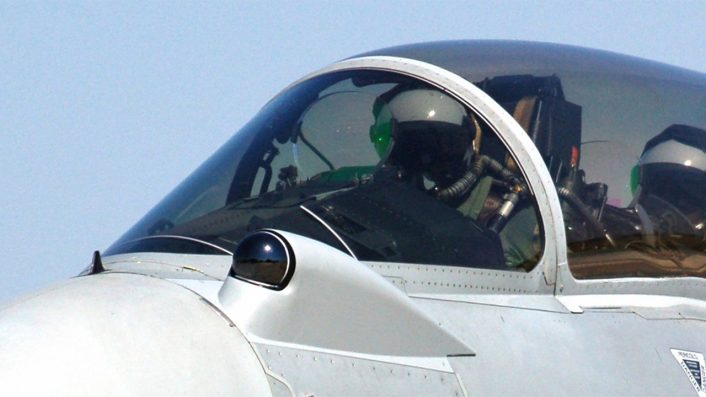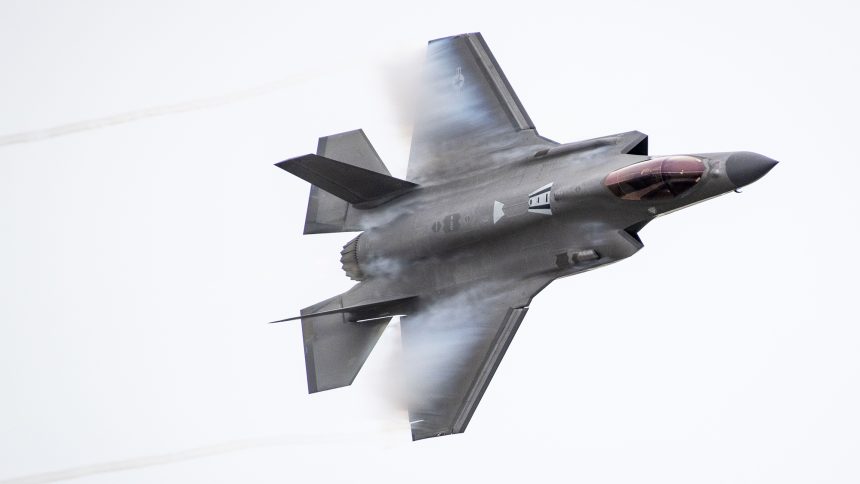Company CEO Jim Taiclet claims that by applying advanced technologies to the F-35, 80% of the F-47’s capability can be achieved at 50% of the cost.
As news of Boeing’s victory in the Next Generation Air Dominance (NGAD) contract sinks in, Lockheed Martin President and Chief Executive Officer hosted company investors in a video conference on Apr. 22, 2025, for a presentation on Q1 earnings performance. Taiclet confirmed directly that Lockheed Martin does not plan to lodge a protest against the contract decision, noting further that the company had taken feedback from the U.S. Air Force on board during a classified debrief.
“We are moving forward and moving out on applying all the technologies that we developed for our NGAD bid onto our embedded base of F-35 and F-22,” explained Taiclet. “I feel that we can have, again, 80% of the capability potentially at 50% of the cost per unit aircraft by taking the F-35 chassis and applying numerous advanced technologies, some of which are already in process in Block 4 and F-35.”
Taiclet refers to the proposed upgraded F-35 as a ‘fifth generation plus’ aircraft, referencing similar nomenclature used for heavily upgraded models of fourth generation fighter aircraft – for example, the F-15E Strike Eagle and F/A-18E/F Super Hornet.

“So we’re basically going to take the chassis and turn it into a Ferrari. It’s like a NASCAR upgrade, so to speak,” Taiclet continues. He says that this option will provide both the U.S. Air Force as well as overseas customers with the best possible value. The resulting F-35 variant is expected to be an exportable product, although it would be configurable should there be a desire to have certain capabilities more restricted in their proliferation.
No solid price point is available for the Boeing F-47, but some reports from 2024 suggested the per unit cost of NGAD could have reached as high as $300 million. This figure would be prohibitive for the USAF, let alone other nations with more limited budgets. If such a price point does turn out to be the case for the F-47, the upgraded F-35 would come in at around $150 million. This is still not an inexpensive aircraft, but it is more comparable to current models. In 2024, the average per unit cost for an F-35A was $82.5 million, but for the B and C variants this rose to $109 million and $102.1 million respectively.
Should the export option be available, Lockheed Martin can take advantage of a well established customer base and solid supply chains. Over 1100 F-35s have now been delivered worldwide, and the company currently projects that total production will span to 3500 airframes. We don’t know whether the F-47 will be exported, but we do know that other next generation fighters are touted for overseas sales. Upgraded F-35s may need to go toe to toe for orders with the consortium built Global Combat Air Programme (GCAP) and Future Combat Air System (FCAS).
Emerging Technologies
Among the capabilities likely included in Lockheed Martin’s proposal is advanced manned-unmanned teaming (MUM-T). The company has already hinted at the F-35 having strong potential in this area, and its submission for Increment 2 of the U.S. Air Force’s Collaborative Combat Aircraft contract is likely to leverage this.
In previous releases, the F-35’s link with new CCAs has been described as utilizing a podded system. It may be the case that part of the ‘supercharged’ upgrade would see this function integrated into the airframe organically, removing the need for an external pod which would, to at least some degree, compromise aircraft performance.
Taiclet also noted the emergence of passive infrared sensors as a key feature on fighter aircraft. Many Russian and Chinese designs have incorporated these from new for some time, and the same can be said for the Eurofighter Typhoon and Dassault Rafale. U.S. designs, however, are having to be equipped with podded infrared search and track (IRST) sensors, as they were not originally designed with them.

A key exception to this is the F-35 itself, which incorporates an IRST capability into the Electro-Optical Targeting System (EOTS) on the chin of every F-35. EOTS is reportedly based on the Sniper XR targeting pod – improved versions have already been put on the table by Lockheed Martin but not yet taken up.
IRST devices mitigate the advantage of stealth aircraft by using infrared signatures rather than radar signatures to acquire, track, and lock onto a target. Although the reduction of infrared signatures has already been a concern of combat aircraft designers for some time, due to the use of infrared seekers in missiles like the AIM-9 Sidewinder, recently more drastic measures have apparently appeared in testing.
The upgrade would undoubtedly also include many software and electronic elements that are externally invisible, but that could completely revolutionize the F-35’s abilities in the fields of electronic warfare, communications, and intelligence, surveillance, and reconnaissance (ISR). Though the F-35 is new for a fighter, the naturally protracted development cycle of any modern combat aircraft means the technology now being fielded by it is at least several years, and often more, out of date.
Massive steps forward in computing and electronics have been taken even in the last decade allowing even more miniaturization than before, while permitting more rapid and reliable software and hardware upgrade processes. Phones we carry in our pockets every day come complete with more random access memory (RAM) and data storage than many full-size personal computers that are still in daily use. If the same level of technological progress is extrapolated to the defense industry, there are certainly many things in classified development facilities right now that many would view as impossible.
It has long been speculated that further down the line the existing lineup of F-35 variants would grow. Some have used this notion to brainstorm ideas for radically different F-35 variants. While we may not see such a huge change to the external mold of the airframe as some of these concept artworks depict, Lockheed Martin’s announcement would seem to be our best sign yet that one day we may see an F-35D, F-35E, or perhaps an F-35F.









